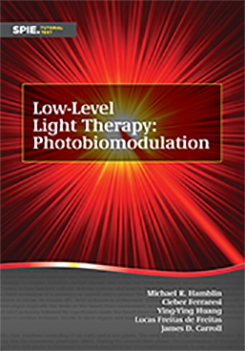|
4.1 Inflammation Lim and co-workers found that 635-nm light irradiation at low power can lead to an anti-inflammatory effect by inhibiting prostaglandin E2 (PGE2) production and cyclo-oxygenase 1 and 2 (COX-1 and COX-2) mRNA expression. The light irradiation was able to decrease intracellular ROS, which mediates the expression of calcium-dependent phospholipase A2 (cPLA2), secretory phospholipase A2 (sPLA2), and COX-2, as well as inhibiting the release of PGE2. PGE2 synthesis is dependent on NF-κB modulation of the cellular signaling mechanism. NF-κB is found in the cytosol in its dimeric form of NF-κB/IκB (the latter is an inhibitory protein). Pro-inflammatory stimuli, such as LPS, can activate the NF-κB upstream signaling regulator IκB kinase (IKK), which is responsible for the phosphorylation and degradation of IκB. The free NF-κB is translocated to the nucleus and induces the expression of pro-inflammatory genes. Lim demonstrated that 635-nm light irradiation suppresses the release of PGE2, possibly through a mechanism related to the inhibition of the NF-κB pathway. It did not affect the phosphorylation of IκB, IKK, and NF-κB in HSP27-silenced human gingival fibroblasts (hGFs), suggesting that NF-κB modulation by 635-nm light through HSP27 is required for the down-regulation of pro-inflammatory gene expression in these fibroblasts. |
|
|


